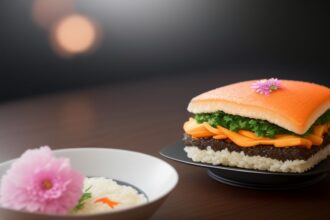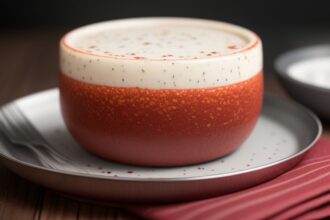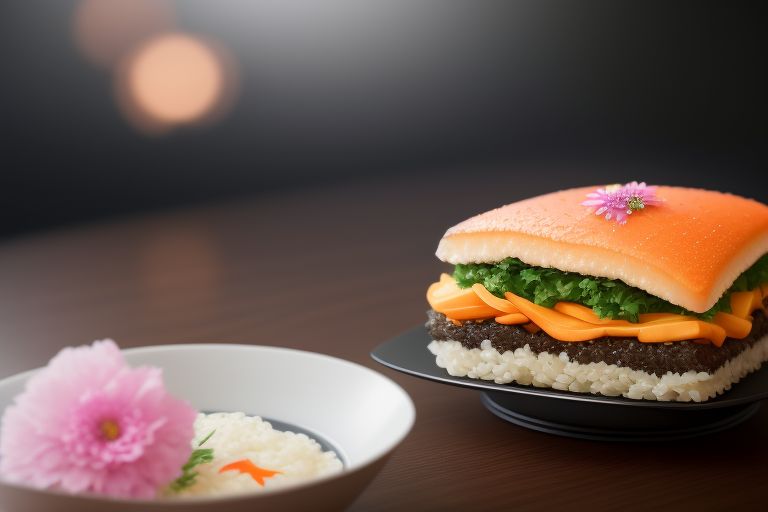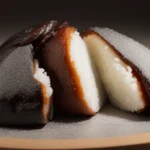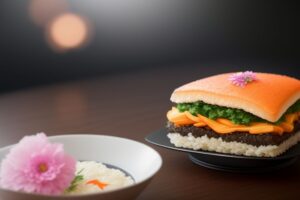
Japanese cuisine, known as washoku, is a culinary marvel shaped by centuries of history and cultural influences. From its emphasis on seasonality to its minimalist presentation, Japanese food captivates with its exquisite beauty and delicate flavors.
Historical and Cultural Roots:
Rooted in a rich history influenced by China, Korea, and indigenous traditions, Japanese cuisine celebrates simplicity, balance, and the inherent beauty of seasonal ingredients.
Seasonality and Ingredients:
Japanese cooking revolves around fresh, seasonal produce, honoring the natural flavors and textures of ingredients like cherry blossoms in spring and matsutake mushrooms in fall.
Simplicity and Elegance:
Embracing simplicity and elegance, Japanese chefs focus on enhancing the innate qualities of ingredients, eschewing heavy sauces for harmonious flavors and clean presentations.
Artful Presentation:
The art of kaiseki ryori emphasizes meticulous presentation, with chefs meticulously arranging dishes to create visually stunning compositions that delight the senses.
Textures and Flavors:
Japanese cuisine offers a symphony of textures and flavors, from the crispness of tempura to the umami-rich depth of dashi, creating a sensory experience unlike any other.
Umami: The Quintessential Flavor:
Umami, the fifth taste, infuses Japanese dishes with depth and complexity, elevating the flavors of traditional ingredients like dashi and soy sauce.
The Craft of Sushi:
Sushi, a culinary icon, showcases the precision and skill of Japanese chefs, with its delicate rice, fresh fish, and meticulous presentation enticing diners worldwide.
Tempura: Light and Crispy Delights:
Tempura highlights the artistry of Japanese frying techniques, combining crispy batter with tender seafood and vegetables for a delectable contrast of textures.
Ramen: Nourishing Comfort in a Bowl:
Ramen, a beloved comfort food, boasts rich broth, chewy noodles, and flavorful toppings, offering a soul-warming experience perfected through hours of simmering.
Bento Boxes: Portable Gastronomy:
Bento boxes provide a convenient and visually appealing way to enjoy a balanced meal on the go, with vibrant components arranged to please both palate and eye.
Tea Ceremony: Tranquility in a Cup:
The Japanese tea ceremony, chanoyu, embodies hospitality and mindfulness, offering a serene moment of respite through the preparation and serving of matcha.
Aesthetic Appreciation in Everyday Life:
Japanese culture values beauty in all aspects of life, from flower arranging to calligraphy, elevating simple acts like serving tea into profound artistic expressions.
Fusion and Innovation:
Contemporary Japanese chefs blend tradition with innovation, creating fusion cuisine that pushes culinary boundaries and captivates global audiences with its creativity.
Culinary Tourism: A Gastronomic Odyssey:
Culinary tourism in Japan offers travelers a chance to explore the country’s diverse food landscape, from street stalls to Michelin-starred restaurants, each offering a unique culinary adventure.
Japanese cuisine’s aesthetic allure transcends mere sustenance, inviting diners on a journey of sensory delight and cultural exploration. With its reverence for tradition and openness to innovation, Japanese food continues to enchant and inspire, promising a culinary experience like no other. Cheers to the beauty and flavor of Japanese cuisine!



